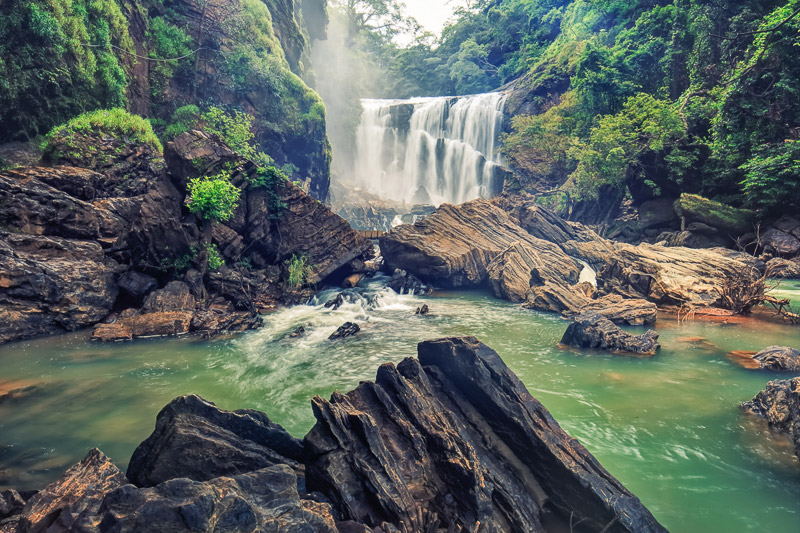
Sathodi Falls in Karnataka
Here at Loaded Landscapes, most of the locations and photographers that we feature are based in the United States, Canada, or Europe, so it is exciting to have a chance to expand our reach. Pratap J is a landscape and travel photographer from India and he recently agreed to participate in an interview. In addition to his own photography outings, Pratap also manages a photo blog and leads photography workshops and tours. You can learn more about Pratap at his site, Pixelshooter.net.
Can you please tell us a little bit about yourself, where you are from, and how you first got started with photography?
I am a photographer from the city of Bangalore in India. My interests lie in landscape and travel photography. I grew up in a big metro city and never had a chance to connect with nature. I later moved to a small town for college where I had a lot of free time to experiment with my first film camera. A few years after that, in 2007, I purchased a DSLR with the money from my first job. During my formative years in photography I used to shoot just about everything. There was no social media to distract me back then. Whatever I photographed was for my own joy. I simultaneously began exploring more of India and my DSLR was a constant companion. That is how I grew into a landscape and travel photographer.
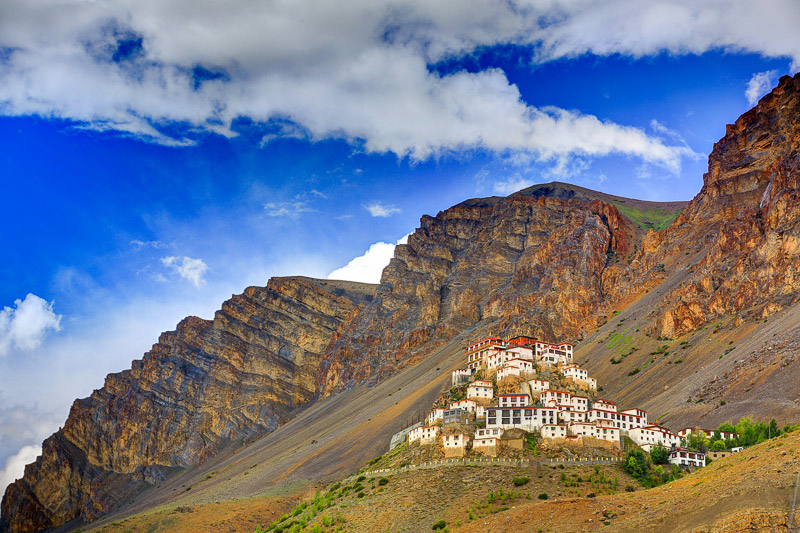
Key Monastery in Spiti Valley, Himachal Pradesh
Do you have any formal training or education in photography?
I do not have a formal education in photography. India has very few schools that offer a formal degree in photography and anyway I always enjoyed learning things by myself. Digital photography has made learning from mistakes very inexpensive. ?

Chandratal Lake in Spiti Valley, Himachal Pradesh
How would you describe your photographic style?
My photography is a natural extension of my love for travel and nature. My senses are heightened when I am in a new place, and more so if I am far away human development. I tend to be the most creative then.
It is important to understand that that India is a very unique country in terms of climate, topology and people. The quality of light is very different here. We do not enjoy long hours of twilight which is very important for a landscape photographer. Road conditions are not the best, and trekking is the only way to get to places that don’t have human settlement. The density of population in most parts of the country is very high. It is difficult to keep people out of the frame when shooting. My photographic style is an adaptation of these challenges.
Consequently, I have two distinct approaches to my photography. On one hand, I try and travel to remote locations in search of pristine landscapes. On the other, I make compositions that include people in the frame.
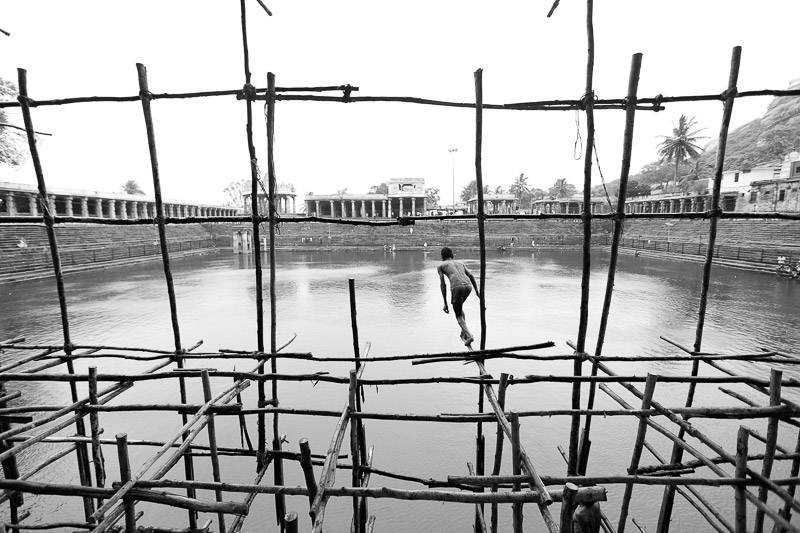
After the Temple Festival in Melkote, Karnataka
Do you have a favorite lens for photographing landscapes?
An ultra wide angle lens and a fast zoom lens are always in my bag. These are the two focal lengths that I love the most. I used a Canon 17-40L lens for a very long time but these days I shoot with an Irix 15mm f2.4 ultra-wide angle lens. The Canon 70-200 f2.8L IS Mark II is my preferred zoom lens. Contrary to popular belief, a zoom lens can be invaluable when it comes to landscape photography. It helps you make tight compositions and motivates you to tell a story with fewer elements in your frame.
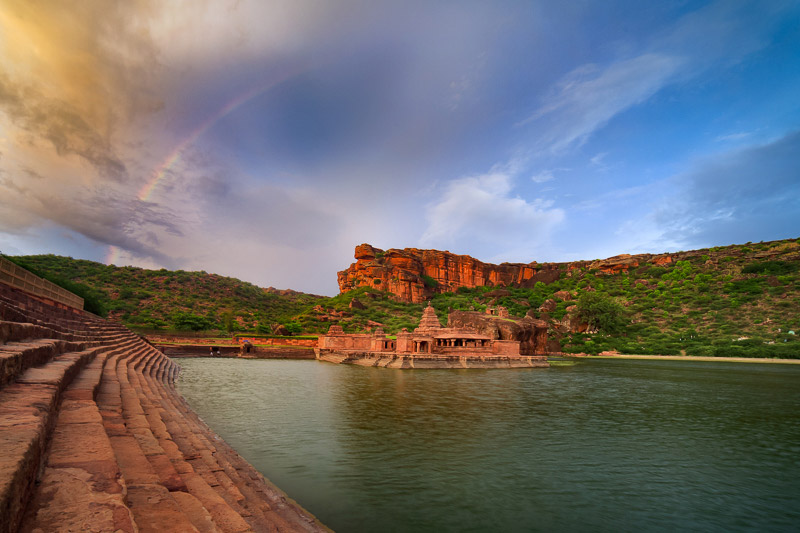
Rainbow over the Aghastya Lake in Badami, Karnataka
What is one important lesson that you have learned through your own photography?
Photography has instilled discipline in me. Sunrises and sunsets don’t wait for anyone so it is important to work backwards and plan everything. I can’t afford to get distracted when I am on a landscape photography shoot.
At the same time, photography has also taught me to accept uncertainties. It does not take much for travel plans to go awry in India. The infrastructure here is not the very best. The weather can easily cause delays. I have encountered many situations where meticulous planning has yielded nothing at all. Over the years, I have learnt not to get frustrated and take things as they come.
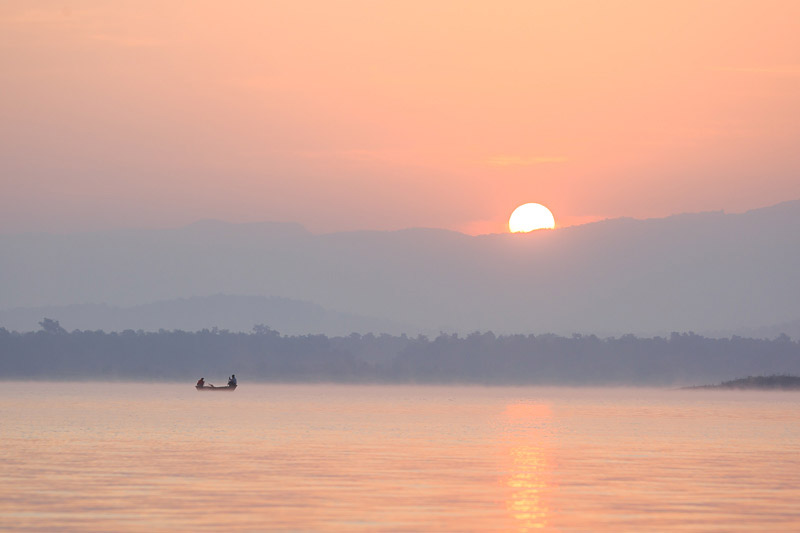
Sunrise on the river Denwa in Madhya Pradesh
What software do you use for post processing?
I am a heavy user of Adobe Lightroom and Photoshop. I think they are the finest software available for photographers. While Lightroom offers a very streamlined workflow, Photoshop is like a Swiss Army Knife. There are so many clever ways in which photographers use Photoshop to process their images. The possibilities are endless!
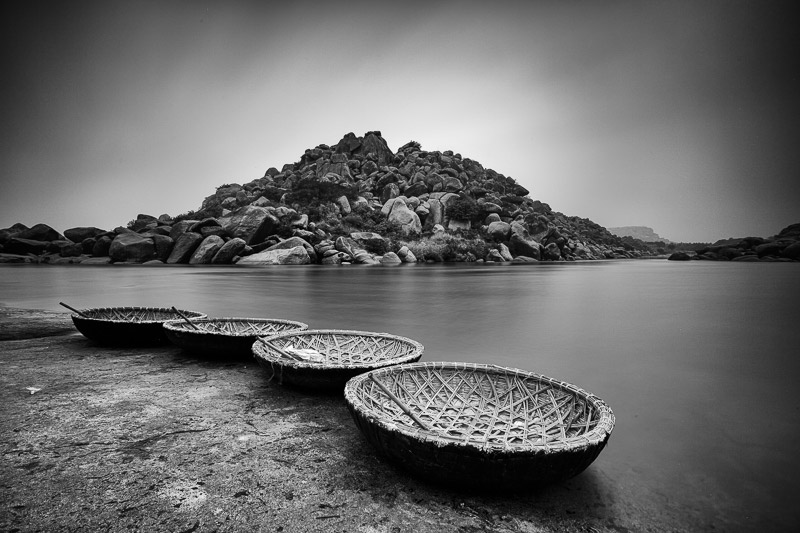
Coracles waiting for a ride in Hampi, Karnataka
Can you tell us about one of your favorite locations or regions in India for photographing?
I really like photographing in the Himalayan region of India. Covering almost 5 States in the North of India, the Himalayas is where every landscape photographer wants to be. Getting to some of the beautiful National Parks in the Himalayas can take several days. It may also involve trekking and camping too. But the people who live in the mountains are very friendly. It is easy to find a guide. They are also very hardy and resourceful and can help you transport equipment.
Down South, my home State of Karnataka has a lot of potential. The mountain range known as the Western Ghats runs along the length of the State and offers a lot of opportunities for photography. Towns such as Hampi and Badami have a lot of historical significance and can be great for landscapes too.
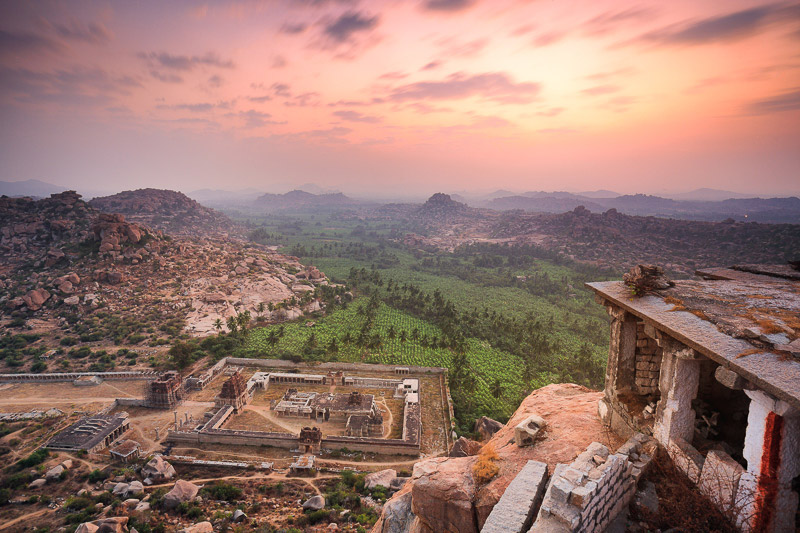
Overlooking the Ruins of the Vijayanagar Empire in Hampi, Karnataka
I know you also do some archival printing. What advice would you give to photographers who are trying to decide if they should invest in learning to produce their own prints?
I would advise aspiring photographers to indulge in archival printing only if they are truly passionate about it. Technology has changed how we photographers connect with our audience. Prints are no longer the most popular means of displaying our work.
That said, the joy of holding a print is unparalleled. Printing has helped me improve my skills because I tend to invest a lot more time on self-critique. You would only want to print your very best, so naturally you look at your images with more attention when you start this journey.
My suggestion would be to invest in a printer only after you have found a way to make money from your prints. If you plan on selling your prints, then by all means invest in a printer because it gives you more control over the quality of the output. If you do not print often, it might be better to visit a lab when required.
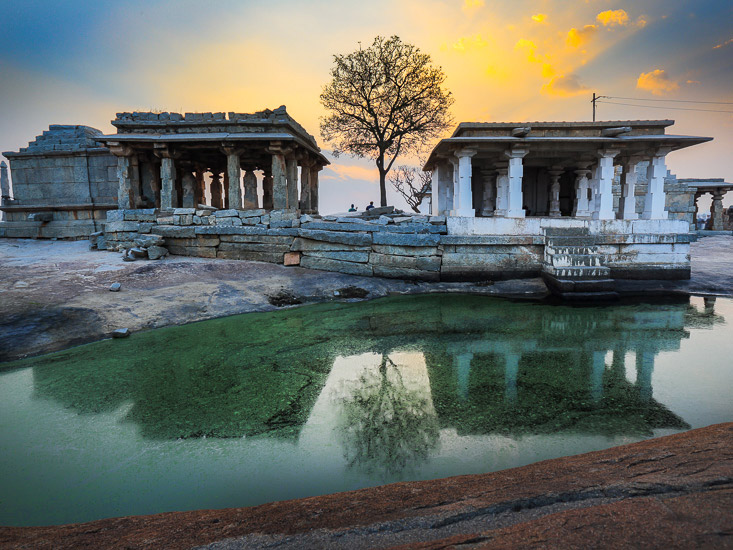
An ancient temple in Hampi, Karnataka
What are the biggest challenges you face in your work as a landscape photographer?
The biggest challenge to me as a landscape photographer is to create images that are more than just a record of picturesque places that I visit. Social media has made people more aware of how beautiful this planet really is. A lot more non-photographers are traveling to remote corners of the earth than ever before. These people are clicking photographs with everything from mobile phones to action cameras and sharing them on the same platforms where more serious photographers try and promote their work. So, the challenge is to make images that stand out. A lot of landscape photographers these days use manipulation techniques to create images that border on photo-art. I personally have nothing against that, but the truth is that the future of pure landscape photography will certainly not be the same as before.
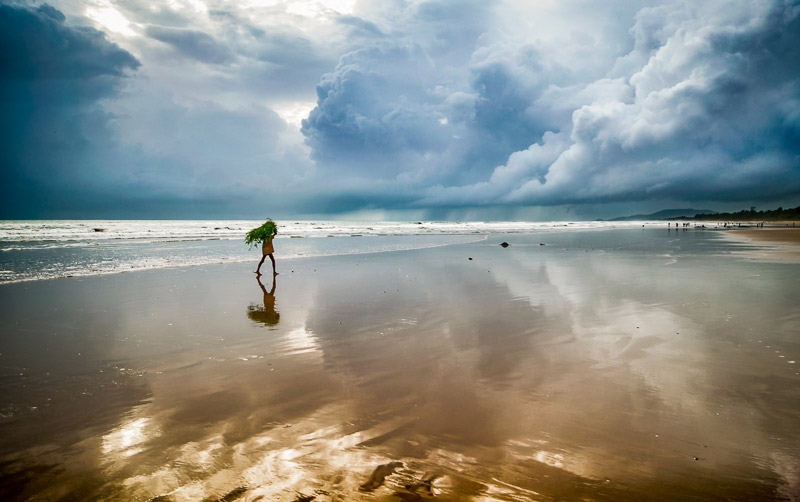
A Man on the Beach in Gokarna, Karnataka
What future plans do you have for your career?
I definitely want to start traveling abroad to shoot landscapes. Living in a developing country has its challenges when it comes to the economics of travel. Luckily, the tourism industry has opened up these days. The choices are more and one can tour the world on any kind of budget. I want to start with exploring more of Asia. Countries like Indonesia, Kyrgyzstan and maybe even rural China look very intriguing.
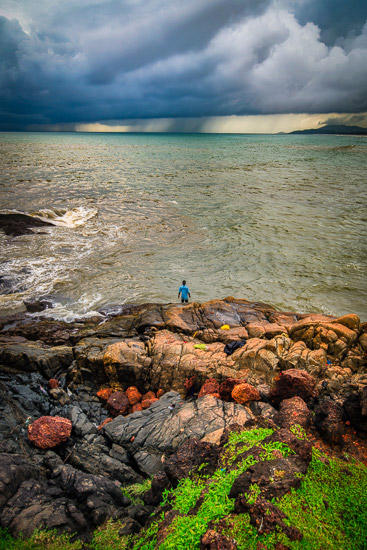
Monsoon Clouds in Gokarna, Karnataka
Connect with Pratap J
If you’d like to see more of his work or get in touch, please use the links below:
All photos in this post are © Pratap J, used with permission.